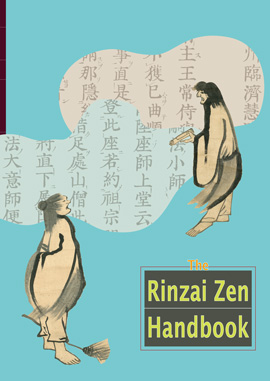
|
|---|
目次
Preface
Chapter One: A Brief Overview of Religion (by Noguchi Zenkei)
1. The Concept of “Religion”
2. Defining Religion
3. Categories of Religion
4. The Three Major World Religions
5. The Aim of Religion
Chapter Two: An Outline of Buddhism (by Honda Dōryū)
1. The Names of the Buddha
2. The Life of Shakyamuni
3. The Basic Doctrines of Buddhism
4. The Propagation and Development of Buddhism
5. The Zen School’s Concept of Shakyamuni
Column: “The Twelve-linked Chain of Causation”
Chapter Three: A History of the Chinese Zen School (Marumo Shunkō)
1. The Wellsprings of the Zen Tradition: Dhyāna and Yoga in India
2. The Transmission of Buddhism to China
3. Bodhidharma, the First Ancestor of Chinese Zen
4. The Transmission of the Dharma to Eka, the Second Ancestor
5. The East Mountain School of Zen
6. Buddhism in the Sui and Tang Dynasties
7. Enō, the Sixth Ancestor
8. Baso Dōitsu and Hyakujō Ekai: The Establishment of Zen Monasticism
9. The Five Houses and Seven Schools
10. Song-dynasty Buddhism
11. Koan-Gazing Zen and Silent-Illumination Zen
12. Zen in the Ming and Qing Dynasties
Chapter Four: The History of Zen in Japan (by Hirota Sōgen)
1. The Transmission and Acceptance of Buddhism in Japan
2. Saichō and Kūkai
3. Buddhism during the Kamakura Period
4. The Zen Masters Yōsai and Dōgen, Founders of the Japanese Rinzai and Sōtō Schools
5. The Spread of Zen to the Provinces
6. The Gozan and Rinka Monasteries
7. Zen in the Early Modern Age
8. The Modernization of Zen
Column “The Head Temples of the Rinzai and Ōbaku Schools”
Chapter Five: The History of Myōshin-ji (by Hirota Sōgen)
1. Zen Master Kanzan Egen and the Establishment of Myōshin-ji
2. Myōshin-ji: Adversity to Prosperity
3. Rinzai Zen Reform Movements
4. Myōshin-ji in the Early Modern Age
Map of the Myōshin-ji Precincts
Column “The Zen Masters Kanzan Egen and Musō Soseki
Chapter Six: The Teachings of Zen (by Ogawa Tairyū)
1. The Fundamental Stance of the Zen School
2. The Rinzai School
3. The Teachings of the Myōshin-ji Branch of Rinzai Zen
4. The Path to Enlightenment (The Ten Oxherding Pictures)
Chapter Seven: Learning from the Sutras (by Shinozuka Junkai)
1. What Are the Sutras?
2. Sutras Used in the Zen School
3. The Texts of the Nikka Kyōten
4. Why Chant the Sutras?
Chapter Eight: Traditional Zen Ceremonies (by Honda Dōryū & Noguchi Zenkei)
1. Principal Ceremonies of the Zen Temple Calendar
2. Higan-e
3. Urabon-e
4. Funerals and Memorial Services
Chapter Nine: The Cultural Manifestations of Zen (by Shimizu Ikkō)
1. Architecture
2. Gardens
3. The Tea Ceremony
4. Calligraphy and Painting
5. Buddhist Statuary
Chapter Ten: Buddhist Terminology (by Horino Shinchō)
1. The Nature of Buddhist Terminology
2. Basic Buddhist Terms
Chapter Eleven: The Wisdom of Zen Phrases (by Horino Shinchō)
1. The Nature of Zen Phrases
2. Typical Zen Phrases
Appendix
Guidelines for Reciting the Sutras
INDEX









